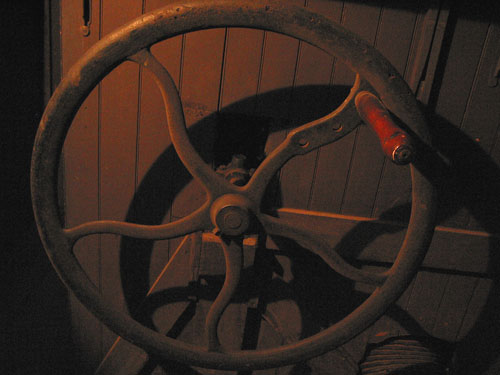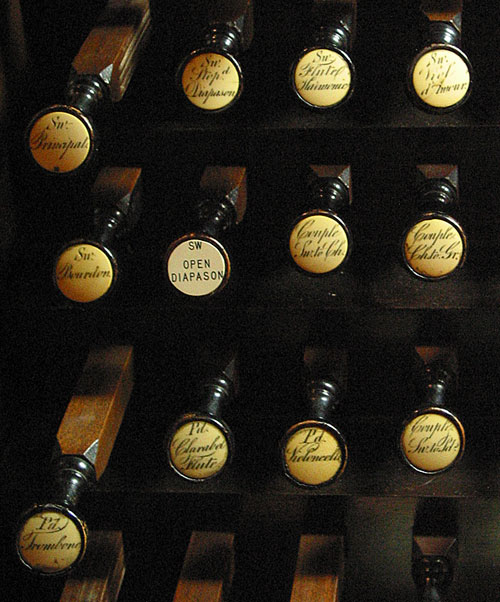This organ is the only example of an original, three-manual Erben extant in its original acoustic space. It is a jewel of organbuilding in New York City, and a treasure of mid-19th century America.
The instrument has three manuals (keyboards) and a pedal division, operated by tracker (mechanical) action. It has dutifully accompanied the services of the Cathedral for almost 136 years, and has survived almost completely intact. Each of the 2,644 pipes is signed and dated by its original voicer, including Henry Erben himself.
The black walnut casework is in Carpenter Gothic style, and the organ is located in the rear gallery. The console is attached and projecting, with overhanging manuals flanked by round-shanked stop-knobs arranged horizontally in terraced jambs. The list of stops can be found on the Web site of the NYC Chapter of the American Guild of Organists, here.
In some ways, neglect has been this instrument's ally. Most of the work that was done on the organ was not up to Erben standards: a few of the original ivory stop labels were replaced with cheap plastic; ciphers were fixed with duct tape; and the materials and construction of the replacement Great mixture were not consistent with Erben’s extraordinarily high level of craftsmanship.
The organ is an exceptional survivor from that era of American organbuilding. Most other similar organs have either been destroyed or altered beyond recognition, especially in New York City, but also in the rest of the country. Though there is not much documentary evidence, what evidence I do have, courtesy of Stephen Pinel and the National Organ Archives in Princeton, suggests that it served a very important liturgical role for the rapidly expanding Catholic Church in New York and in the musical life of the City.

